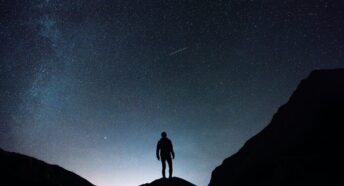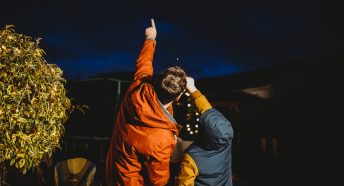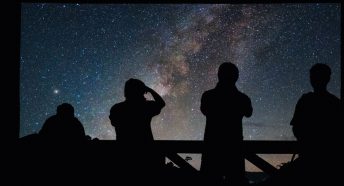Dark Skies Update
It’s been a busy time for Dark Skies enthusiasts with a cold crisp month of November giving, at time superb views of the constellations in addition to planets.
The month started with opportunities to see the Northern Lights – Aurora Borealis – from within the Yorkshire Dales national Park. The photograph below was taken by a local runner on her phone. Much better views were observed on the coast.
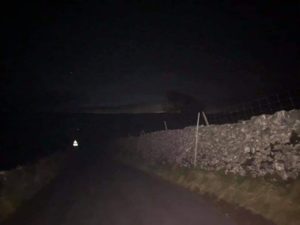
How are the aurora caused?
The northern lights are caused by the interaction of the solar wind – a stream of charged particles being ejected from the Sun – and our planet’s magnetic field and atmosphere. The sun is 93 million miles away. But its effects extend far beyond its visible surface. Great storms on the sun send gusts of charged solar particles hurtling across space. If Earth is in the path of the particle stream, our planet’s magnetic field and atmosphere react. When the charged particles from the sun strike atoms and molecules in Earth’s atmosphere, they excite those atoms, causing them to light up.
Those who live at or visit high latitudes might at times experience coloured lights shimmering across the night sky – sometimes the venture south so we can see them.
The next spectacular – fiction catching up with fact – was the launch of NASA’s Dart mission.

In late September or early October of 2022, the 1,210-pound (550 kilograms) DART spacecraft will slam itself into an asteroid called Dimorphos. Scientists will be watching eagerly, measuring how much the impact speeds up the space rock’s orbit around its larger companion, Didymos — the first real data about what it might really require to steer a threatening asteroid out of Earth’s path.
It’s just one rock, just a small change. Just to reduce the odds that we humans go the way of the dinosaurs. But DART’s impact will also mark a new relationship between humans and the solar system we live in, a milestone perhaps worth contemplating.
Universe
Over the month, the physicist and Professor, Brian Cox professor is hosted a new BBC Earth series aptly called Universe. The series marked a continuation of his previous series called The Planets, which focused on the story of the solar system.
However, Universe pushed the knowledge and insights well beyond our Solar System.
7000 light years from Earth our galaxy is producing new stars in a small, but iconic corner of the ‘Eagle Nebula’ known as the ‘Pillars of Creation.
Throughout the five episodes, Brian Cox delved into the vastness of space, uncovering the moments of sheer drama when the universe as we know it changed forever. With impressive special effects accompanied by his insightful and understandable narrative, we the viewer could experience the power of a supermassive black hole, the birth of a star and many other miracles of the cosmos.
The incredible CGI let us witness the ignition of a new star and stand on the surface of planets that could harbour life in other galaxies.
With a quote worth remembering:
I only wish this series had been about when I struggled to comprehend scientific texts many years ago. If you missed it, it is on iplayer!
What’s to see?
Through December, if you look to the South West you will see a crescent moon. Early in the month just above the tip of the crescent you should be able to see a bright “star” – this is not a start it is the planet Venus.
Venus remains low in the sky, but by the 10th , above Venus, will be opportunities to see Saturn – use a pair of binoculars and with crisp evenings you may see the rings of Saturn.
Towards the middle of the month, accompanying the moon will be the largest planet – brightly shining – Jupiter. You may, with the aid of binoculars, see some of Jupiter’s moons and if a really frosty night some of the features of Jupiter itself.
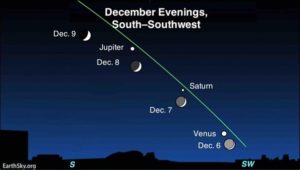
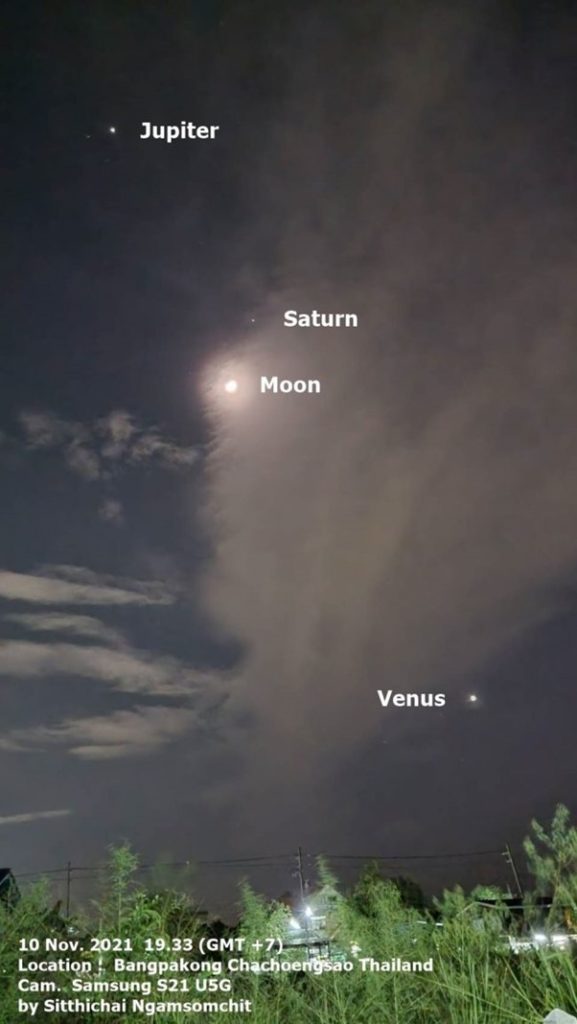
If you are stuck for Christmas, high value presents for the budding astronomer, at relatively low cost, try,
100 Things to See in the Night Sky: From Planets and Satellites to Meteors and Constellations, Your Guide to Stargazing by Dean Regas Priced at £8.58 hard copy, slightly cheaper if bought as an ebook.
2022 Guide to the Night Sky: A month-by-month guide to exploring the skies above Britain and Ireland – £5.94 (Essential!!!)
Night Sky Almanac 2022: A stargazer’s guide by Storm Dunlop, Wil Tirion, et al. £6.00
The Universe: The book of the BBC TV series presented by Professor Brian Cox by Andrew Cohen and Professor Brian Cox. £15.00




